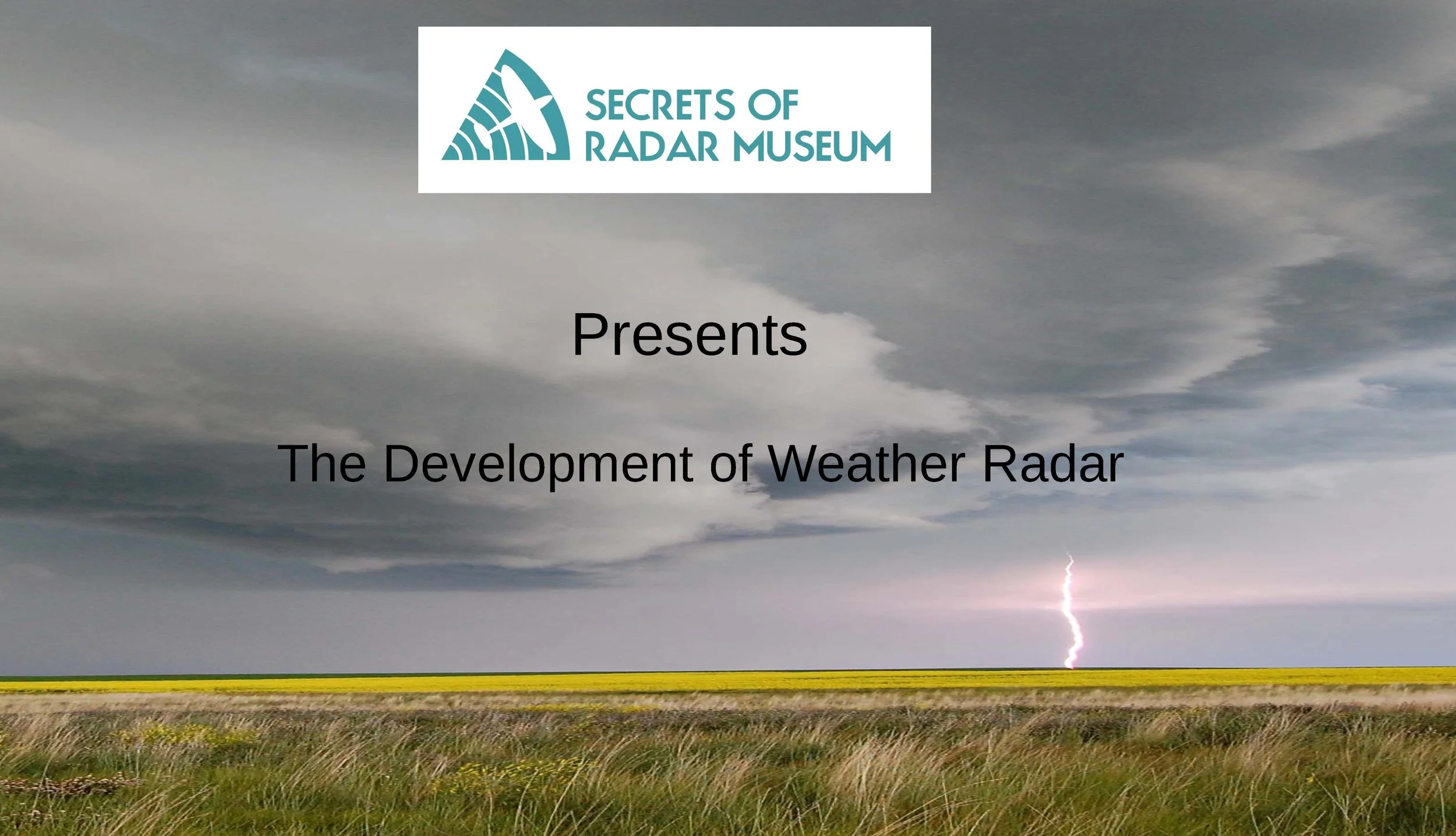the first naval battle in which radar was used for gunnery
Click on the images to find out more about the first naval battle to use radar for gunnery! Many thanks to Maritime Engineering Journal for allowing us to showcase this feature.
It’s Here! Presenting the development of weather radar
#MuseumFromHome with the Secrets of Radar Museum
COVID-19 has sent us all home, but that doesn’t stop us from sharing our stories with you. These short videos present objects in the museum collection through film, still, and audio.
Episode 1: “RCAF Pillow Shams”
In this inaugural #MuseumFromHome video, Maya Hirschman introduces viewers to an RCAF pillow sham displayed at the museum.
STILL STANDING, Season 2, Episode 2: Vanastra
"Vanastra, ON was once a top secret military base responsible for training the original RADAR technicians that would eventually end World War II. But now its buildings are crumbling." The episode features Jim "Sandy" Sands who was a founder of SoRM and RCAF radar trainee at Clinton during the Second World War. Aired on CBC June 21, 2016. Viewable online... for now, but probably not forever.
Irene Mathyssen stands up for Radar
On November 3, 2014, Irene Mathyssen, Member of Parliament for London Fanshawe, stood up in the House of Commons to voice her support for the Secrets of Radar Museum.
Virtual Exhibits by the Secrets of Radar Museum
Top Secret War: London Ontario’s Hidden Radar History
This exhibit focuses on Southwestern Ontario, but Canadian radar personnel came from all over the country. The story of wartime radar stretches across Canada, from coast to coast. This exhibit hopes to emphasize that ordinary men and women played a critical part in the outcome of the Second World War. Radar also informs the technological and scientific development of the 20th century.
After the Second World War, radar technology continued to adapt and be used internationally. Radar continues to be a part of our every day lives, and most of the time we aren’t even aware of it. Radar has been used for air travel, weather tracking, microwave technology and more.
To tell Canada’s radar story we chose to present this exhibit as a series of fictionalized documents. You will find letters, diary entries, and articles. While none of these were written by the people themselves, all of the information in them is based on reality.
The fictional documents in this exhibit are based on archival materials from the Secrets of Radar Museum.
Sworn to Secrecy: Canadians on Radar, 1940-1945
This virtual exhibit, hosted at the Virtual Museum of Canada, is based on the core content of The Secrets of Radar Museum and the story it was originally created to tell.
From the exhibit:
Members of the WAAF worked closely with Canadian radar mechanics (resulting in many later emigrating to Canada as war brides). Working at the stations was not easy, and many experienced bombing raids and counter attacks by the Germans. Those who worked with radar knew that a nation depended upon their vigilance and the early warning and assistance that they were able to give the Allied troops.
Members of the British Women's Auxiliary Air Force.
The Secrets of Radar Museum, Jan Bates Collection
The Secrets of Cold War Radar
This virtual exhibit, put forward by the Secrets of Radar Museum in 2011, provides an introduction to the history of Canadian Cold War involvement and the role Radar played.
From the exhibit:
Today, Canadians do not always think about the sovereignty of our airspace. However, it was not that long ago that there was real fear over it and more specifically, our place in between the United States and the Soviet Union. During the Cold War, radar (along with aircrafts, communication networks, and the people who served them all) was a key part of Canadian and world air defence.
Although radar played this important role, its story is not well known. The role of radar technology in the Second World War and then the Cold War is an interesting and crucial part of history. This exhibit, as put forward by the Secrets of Radar Museum, tells this story by tracing the history of radar during the Cold War, with an emphasis on Canada.
The virtual exhibit has not been updated; please refer to our current main website (the one you're currently visiting) for all the most up-to-date information regarding the museum's operations and hours.
More Multimedia Content is coming!
In the meantime, please visit these sites to learn more about radar and enjoy the many links, anecdotes, and media they have to share.
Check out the fascinating history of radar's co-creator, Robert Watson-Watt.
Learn about Canadian long-range radar sites, like the Pine Tree Line. The original website "Pinetreeline.org" disappeared in 2009, but is at least partially archived at Archive.org. For additional information about radar warning lines and so much more, you can visit this great website, founded by Larry Wilson.






